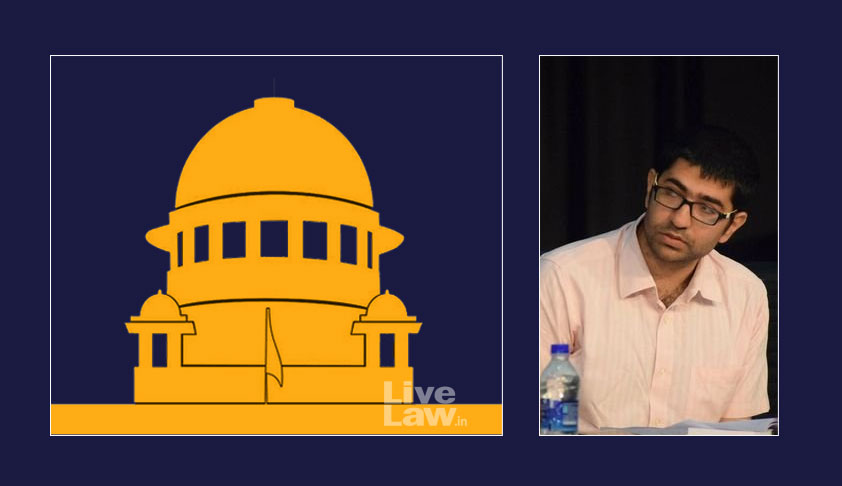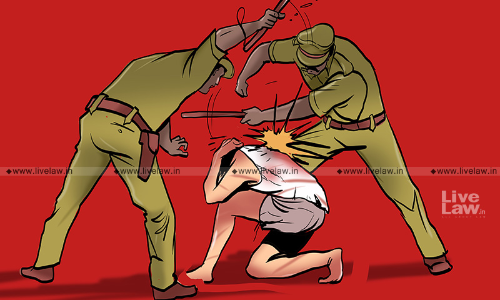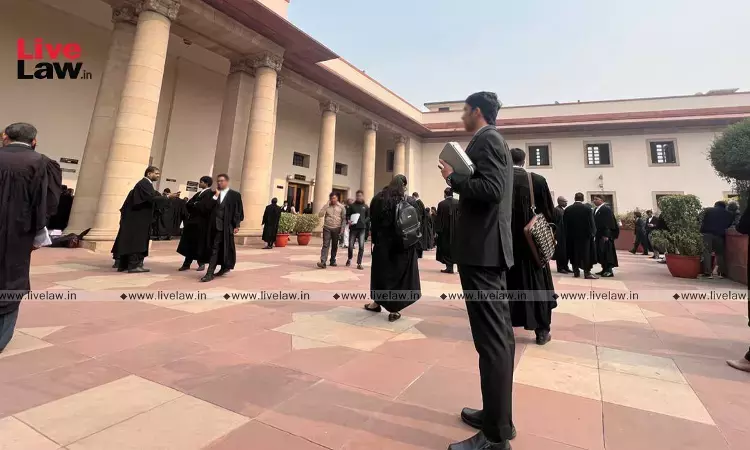The Supreme Court’s Right to Privacy Judgment -III: Privacy, Surveillance, and the Body

In the previous two essays, I discussed the conceptual foundations of the right to privacy judgment, as well as the theoretical underpinnings of privacy endorsed by the Court. in the next three essays, I shall consider the three aspects that the judgments identify at the heart of the concept of privacy: the body, personal information, and decisional autonomy.First, the body. As Justices...
In the previous two essays, I discussed the conceptual foundations of the right to privacy judgment, as well as the theoretical underpinnings of privacy endorsed by the Court. in the next three essays, I shall consider the three aspects that the judgments identify at the heart of the concept of privacy: the body, personal information, and decisional autonomy.
First, the body. As Justices Sachs and O’Regan of the South African Constitutional Court observed, the “inviolability and worth of the human body” is central to any formulation of privacy. The concern for bodily integrity comes through most clearly in Justice Chelameswar’s opinion, when he speaks about “freedom from unwarranted stimuli” (para 36), corporal punishment, and forced feeding (para 38). The phrase “unwarranted stimuli” recalls the 2010 judgment of the Supreme Court in Selvi vs State of Karnataka where, in striking down police interrogation techniques such as narco-analysis and brain-mapping, the Court provided its most detailed and considered analysis of bodily (and mental) privacy under Articles 20(3) and 21 of the Constitution. I have examinedthe judgment in Selvi elsewhere, and will not rehearse the arguments here, apart from noting that, in the operative order of Court, Selvi stands affirmed as correctly decided.
Privacy’s concern with the body, however, goes beyond direct, physical interference by the State. Consider, for example, what the journalist Glenn Greenwald writes in No Place to Hide, the book that chronicles Edward Snowden’s unmasking of the American mass surveillance regime:
“Only when we believe that nobody else is watching us do we feel free – safe – to truly experiment, to test boundaries, to explore new ways of thinking and being, to explore what it means to be ourselves… for that reason, it is in the realm of privacy where creativity, dissent, and challenges to orthodoxy germinate. A society in which everyone knows they can be watched by the state – where the private realm is effectively eliminated – is one in which those attributes are lost, at both the societal and the individual level.”
Fifty-five years ago, Justice Subba Rao understood this when he penned his powerful dissent in Kharak Singh vs State of UP. Recall that Kharak Singh was about police surveillance of a “history-sheeter”, which included tracking his movements. Striking down the regulations in their entirety, Subba Rao J observed that “if a man is shadowed, his movements are obviously constricted… [the] movement of an automation. How could a movement under the scrutinizing gaze of the policemen be described as a free movement? The whole country is his jail… the petitioner under the shadow of surveillance is certainly deprived of this freedom [the freedom of movement]. He can move physically, but he cannot do so freely, for all his activities are watched and noted. The shroud of surveillance cast upon him perforce perforce engender(s) inhibitions in him and he cannot act freely as he would like to do.”
And:
“Assuming that Art. 19(1)(d) of the Constitution must be confined only to physical movements, its combination with the freedom of speech and expression leads to the conclusion we have arrived at. The act of surveillance is certainly a restriction on the said freedom. It cannot be suggested that the said freedom is also bereft of its subjective or psychological content, but will sustain only the mechanics of speech and expression. An illustration will make our point clear. A visitor, whether a wife, son or friend, is allowed to be received by a prisoner in the presence of a guard. The prisoner can speak with the visitor; but, can it be suggested that he is fully enjoying the said freedom? It is impossible for him to express his real and intimate thoughts to the visitor as fully as he would like.”
At the heart of Justice Subba Rao’s dissenting opinion was the crucial insight that surveillance does not always leave perceptible traces in the physical world. Rather, it works insidiously upon the minds of its targets, channeling their actions, their movements, their associations, and their very thoughts into preset grooves and patterns, killing dissent and heterodoxy, and imposing a stifling, psychological conformism upon society. Nor was this opinion outlandish or extreme: from Bentham’s panopticon to Foucault’s disciplinary regimes, the psychological impact that surveillance wreaks upon the human body has been well-known and thoroughly studied.
The disagreement between Justice Subba Rao and the Majority opinion in Kharak Singh is commonly understood to be a disagreement between the “silos approach” to Part III (flowing from A.K. Gopalan, and upheld by the majority), and the integrated approach that read fundamental rights together (espoused by Justice Subba Rao). However, the disagreement actually went much deeper. The majority judges rejected root and branch Justice Subba Rao’s view that surveillance was constitutionally suspect because of the psychological impact it had upon its targets. According to the majority:
“In dealing with a fundamental right such as the right to free movement or personal liberty, that only can constitute an infringement which is both direct as well as tangible and it could not be that under these freedoms the Constitution-makers intended to protect or protected mere personal sensitiveness…. Learned Counsel suggested that the knowledge or apprehension that the police were on the watch for the movements of the suspect, might induce a psychological inhibition against his movements but, as already pointed out, we are unable to accept the argument that for this reason there is an impairment of the “free” movement guaranteed by sub-cl. (d). Art. 19(1)(d) has reference to something tangible and physical rather and not to the imponderable effect on the mind of a person which might guide his action in the matter of his movement or locomotion.”
The core disagreement between the majority and Justice Subba Rao, therefore, was not merely an interpretive dispute about how to read the Constitution, but a much deeper and more fundamental clash: was the Constitution’s protection of the human body limited to physical and observable constraints, or did the Constitution protect something more intangible as well – that “realm of privacy where creativity, dissent, and challenges to orthodoxy germinate”?
Puttaswamy’s overruling of Kharak Singh, therefore, opens up a further question. Was Kharak Singh overruled only in a narrow sense – i.e., to the limited extent that the “silos approach” was held to be no longer good law? Or was it overruled in the broader sense, in its very understanding of what fundamental rights are about?
In my view, a close reading of all six judgments makes it clear that the Kharak Singh majority was overruled in the broader sense, and Justice Subba Rao’s dissent was resurrected in its entirety. Consider, for example, Justice Chandrachud’s observation, in paragraph 168 of his opinion:
“Individual dignity and privacy are inextricably linked in a pattern woven out of a thread of diversity into the fabric of a plural culture.”
This is not mere rhetoric. A few lines before this, Justice Chandrachud referred to the individual’s right to “stand against the tide of conformity in creating a zone of solitude.” (para 168) In his separate opinion, Justice Chelameswar warned of “attempts by governments to shape the minds of subjects… conditioning the thought process by prescribing what to read or not to read… what forms of art alone are required to be appreciated leading to the conditioning of beliefs.” (para 37) Justice Bobde defended the idea of a “zone of internal freedom in which to think.” (para 22) And perhaps most bluntly of all, Justice Kaul observed that “knowledge about a person gives a power over that person… privacy is key to the freedom of thought.” (para 52) An overarching cast was given to this by Justice Nariman who, throughout his judgment, referred to Justice Subba Rao’s opinion as one of the “three great dissents” in the history of Indian constitutional law, making it clear that he was referring to – and resurrecting – that dissent in its richest, deepest, and most comprehensive sense.
What all the separate opinions understood was that without privacy, the core constitutional freedoms that we take for granted will cease to be meaningful. Justice Subba Rao’s eloquent description of a shadowed man to whom the entire country was a prison tells us how important privacy is to the freedom of movement. And it is more than that. We will hesitate to associate with unpopular groups espousing unpopular causes, if we know that we are being watched. There is so much that we will not say to each other if we know that, one day, it could be made public. We will self-censor, draw ever more constricting lines in the sand, and suffocate ourselves with our own caution. We will censor others, warning them not to speak to much, be too radical, or think too differently.
On the Kharak Singh majority’s view, none of that is of constitutional concern. But fortunately, that is no longer the law of the land. Five and a half decades after his solitary dissent, Puttaswamy has ensured that Justice Subba Rao’s insight is now constitutional wisdom. As the above observations show, one of the crucial features of the right to privacy judgment is the understanding that democracy is founded on pluralism and diversity, and pluralism and diversity begin in the mind. Privacy is important not because people have something to hide, but because privacy gives people a sanctuary where they can think, be, and live, in opposition to the dominant cultural, social, and political norms of the time. Privacy allows people a space where they can refuse to conform. And it is in that space where liberty flourishes, the liberty to fashion alternative ways of life, which – ultimately – form and take shape in the public sphere, allowing society always to renew itself.
As Meenakshi Arora, one of the senior counsel for the petitioners observed during oral arguments, to live without privacy is akin to living under the shadow of a perpetual, general warrant in your name, issued by the State – a warrant that chills speech, chills association, chills movement, and chills thought; a perpetual warrant that can only produce the kind of conformity that Justice Jackson, the great American judge, likened to the “unanimity of the graveyard.”
In making the body central to the right to privacy, Puttaswamy has performed the crucial role of making cases like Selvi – which were all about limiting the brute, coercive power of the State over the human body – constitutionally secure. But it has also performed an even more crucial role in giving firm, constitutional footing to the challenges to State surveillance, which are bound to be at the heart of the legal battle between the individual and the State in the years to come.
Gautam Bhatia is a lawyer practicing in Supreme Court of India. This is an adapted version of an Article published in Business Standard taken from his blog Indian Constitutional Law And Philosophy





